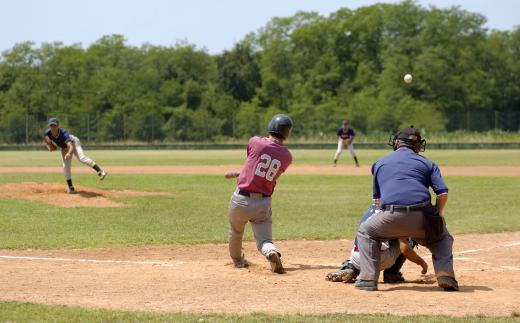At WiseGEEK, we're committed to delivering accurate, trustworthy information. Our expert-authored content is rigorously fact-checked and sourced from credible authorities. Discover how we uphold the highest standards in providing you with reliable knowledge.
What is a Sesamoid?
A sesamoid is a bone that is not connected to another bone in the body and is usually embedded in muscles or connected to tendons. Two sesamoids can be found on the underside of a person’s foot. The sesamoid bones generally function like pulleys and increase the ability of tendons to transmit forces from nearby muscles. These bones often have a smooth surface that tendons easily slide across.
Some people develop a painful disorder of the sesamoids on the underside of the feet known as sesamoiditis. This condition is a form of tendinitis that causes attached tendons to become inflamed and irritated. Runners and baseball players who play the catcher position often develop sesamoiditis. Ballet dancers also have an increased risk of getting sesamoiditis due to the stress they place on the undersides of their feet.

Sesamoiditis typically causes pain on the ball of the foot under the big toe. Pain from this form of tendinitis usually develops gradually. In most cases, people who develop sudden pain around a sesamoid have a bone fracture instead of sesamoiditis. Some people with sesamoiditis have swelling or bruising in the sesamoid area underneath one of their feet. Straightening or bending the big toe can be difficult or painful in many sesamoiditis cases.

Physicians usually evaluate the tenderness of the sesamoid area on the underside of a patient’s foot and pay close attention to a patient’s ability to move the big toe during a physical examination. A doctor may take x-rays of both feet in order to compare an injured foot to an uninjured foot and identify any signs of sesamoid bone fracture. In some cases, a magnetic resonance (MRI) imaging test provides more detailed images of a sesamoid bone and its surrounding tendons.

Patients with sesamoiditis typically need to refrain from any athletic activities that may have caused the condition. Doctors may recommend anti-inflammatory drugs such as ibuprofen to relieve sesamoiditis pain. In some cases, patients can apply an ice pack to the sole of an affected foot to relieve inflammation. Many people with this condition find that soft-soled, low-heel shoes or stiff-soled shoes provide better foot comfort than other types of shoes during recovery. A physician may inject a steroid into the injured area of the foot to relieve swelling.

People with fractured sesamoids may need to wear a short brace or stiff-soled shoe to aid healing and recovery. Some doctors tape a big toe joint on an affected foot to limit the movement of the big toe. Patients often take over-the-counter pain relievers for sesamoid fracture pain. The pain from fractured sesamoids may remain for several months until healing has occurred.
AS FEATURED ON:
AS FEATURED ON:















Discussion Comments
i would like to know what can i do to speed up the process or help my pain. I broke both my sesamoid bones in my left foot bout 11 weeks ago and i have gotten steroid injections in them but still no luck. I am a zumba instructor and miss my work.
Post your comments